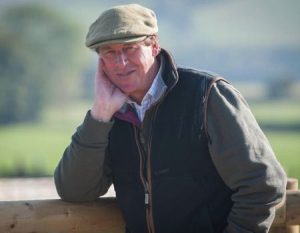
Kim Bailey’s horse racing career began work in the yards of Captain Tim Forster and Fred Rimell before moving to open a yard of his own in Gloucestershire in 2006. From the moment that he opened Thorndale Farm, Bailey worked to ensure that his horses could work in a professional, safe and relaxed environment; a decision that has obviously paid off when you consider that he has managed to win all three of the Grand National, the Cheltenham Gold Cup and the Champion Hurdle. He is a trainer that has seen bad times as well as good, saddling just three winners in 2007-2008 before returning to the top of his game in the years that followed.
About
Set in 1,000 acres of farmland in Gloucestershire, Thorndale Farm offers Kim Bailey the perfect place to train his horses ready for action. He gained experience in the world of jump racing thanks to years under the tutorship of Captain Tim Forster and Fred Rimell, Bailey went out on his own at the end of the 1980s and spent the 1990s at the pinnacle of the world of jump racing. For a time, he was the only active trainer that had won all of the ‘big three’ of the Grand National, Gold Cup and Champion Hurdle, so it is little wonder that his reputation in the industry is a strong one. Nowadays he has a much smaller stable, content to train and win the races that he can.
Major Successes
Having trained thousands of winners over the years, it is not outrageous to suggest that Kim Bailey is a man who knows how to get a horse over the finish line in the biggest of races. When it comes to those big races, there are few with names as impressive as the following:
- Grand National
- Cheltenham Gold Cup
- Champion Hurdle
Horses Trained
During his early years as a trainer, Bailey adopted the approach that is quite common for trainers of have a large number of horses in his yard in the hope that a few of them would achieve something. As a result, it is fair to say that he’s had a number of different horses under his training in the 30-plus years he’s been in the industry. That being said, there are definitely three that stand out above all of the others:
Mr Frisk
Bailey bought Mr Frisk and took him back to his yard, at which point he felt that he wasn’t very fast nor particularly good. He worried that he would be an embarrassing horse for him when he entered him in his first race at Exeter, only to see him win by 20 lengths. Bailey soon realised that he was a horse that would struggle unless there was fast ground, but if there was then he would be akin to lightning. Though he won other races, such as the Whitbread Gold Cup, that theory was perhaps best proved in his Grand National victory, which he achieved in a record-breaking time of eight minutes and 47.80 seconds.
Master Oats
Master Oats wasn’t the most intelligent horse that Bailey ever worked with, by the trainer’s own admission, but he was a trier and specialised in steeplechases. His record ended up being quite impressive, winning ten of the 21 races that he ran in during his career. His success was all the more incredible when you consider that he would break blood vessels when under stress, meaning that Bailey had to be careful with him in the training yard. Having won the Welsh Grand National in 1994, he turned up at Cheltenham the following year having won four consecutive races over long distances, wining the Gold Cup by 15 lengths.
Alderbrook
If you want a horse to do well in races, it helps if they’re quick over the obstacles. Alderbrook did just that, leading to Timeform declaring him to be the top-rated hurdler in both 1995 and 1996. He won his first four handicaps under the training of Kim Bailey, doing particularly well over soft ground. He started life on the flat before being moved to jump racing, with his greatest success coming at Cheltenham when he won the Champion Hurdle. That came a few days before Master Oats’ success in the Gold Cup, meaning it was a particularly successful week for Bailey in Gloucestershire. He also won the Scottish Champion Hurdle the following year.
